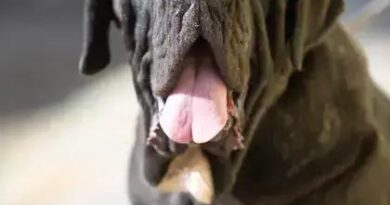O que é Nova Raça
What is a New Dog Breed?
A new dog breed refers to a type of dog that has been selectively bred to exhibit specific traits, characteristics, or behaviors that distinguish it from existing breeds. This process often involves crossbreeding two or more established breeds to create a unique combination of features. The goal is to enhance certain qualities, such as temperament, appearance, or working ability, resulting in a breed that meets the needs of specific owners or lifestyles.
Characteristics of New Dog Breeds
New dog breeds can vary widely in their physical characteristics, including size, coat type, and color. These breeds may also exhibit distinct behavioral traits, such as energy levels, trainability, and sociability. As breeders focus on specific traits, the resulting dogs may be better suited for particular roles, such as companionship, service work, or sporting activities. Understanding these characteristics is crucial for potential owners looking to find a breed that fits their lifestyle.
The Process of Creating a New Dog Breed
Creating a new dog breed is a meticulous process that requires careful planning and execution. Breeders typically start by selecting parent breeds that possess desirable traits. Through controlled breeding, they aim to produce offspring that exhibit these traits consistently. This process can take several generations, as breeders work to stabilize the breed’s characteristics and ensure that they are passed down to future generations.
Recognizing a New Dog Breed
For a new dog breed to be officially recognized, it must meet specific criteria set by kennel clubs and breed organizations. These criteria often include a defined breed standard, a stable population, and a history of breeding practices. Once a breed has been established and meets these requirements, it can gain recognition, allowing it to participate in dog shows and competitions, further promoting its visibility and desirability.
The Importance of Breed Standards
Breed standards play a crucial role in the development and recognition of new dog breeds. These standards outline the ideal physical and behavioral traits of the breed, serving as a guideline for breeders. Adhering to these standards helps maintain the integrity of the breed and ensures that future generations retain the desired characteristics. Additionally, breed standards help educate potential owners about what to expect from their new dog.
Health Considerations for New Breeds
As with any dog breed, health considerations are paramount when it comes to new breeds. Selective breeding can sometimes lead to genetic issues if not done responsibly. Breeders must prioritize health testing and genetic screening to minimize the risk of inherited diseases. Responsible breeding practices are essential to ensure that new breeds are not only aesthetically pleasing but also healthy and capable of leading long, fulfilling lives.
Popular New Dog Breeds
In recent years, several new dog breeds have gained popularity among dog enthusiasts. Breeds such as the Dogo Argentino, American Bully, and the Pomsky have captured the hearts of many due to their unique appearances and temperaments. Each of these breeds has its own set of characteristics that appeal to different types of dog owners, highlighting the diversity and creativity involved in breeding new dog breeds.
Adopting a New Dog Breed
When considering adopting a new dog breed, it’s essential to conduct thorough research. Understanding the breed’s specific needs, temperament, and potential health issues can help ensure a successful match between the dog and its owner. Additionally, prospective owners should seek reputable breeders or rescue organizations that prioritize the health and well-being of their dogs, ensuring a positive experience for both the pet and the owner.
The Future of New Dog Breeds
The future of new dog breeds is an exciting prospect, as breeders continue to innovate and respond to the changing needs of dog owners. As society evolves, so do the roles that dogs play in our lives. This ongoing evolution may lead to the development of new breeds that are better suited for specific tasks, such as therapy work or assistance for individuals with disabilities. The possibilities are endless, and the love for dogs will continue to inspire new creations in the canine world.



